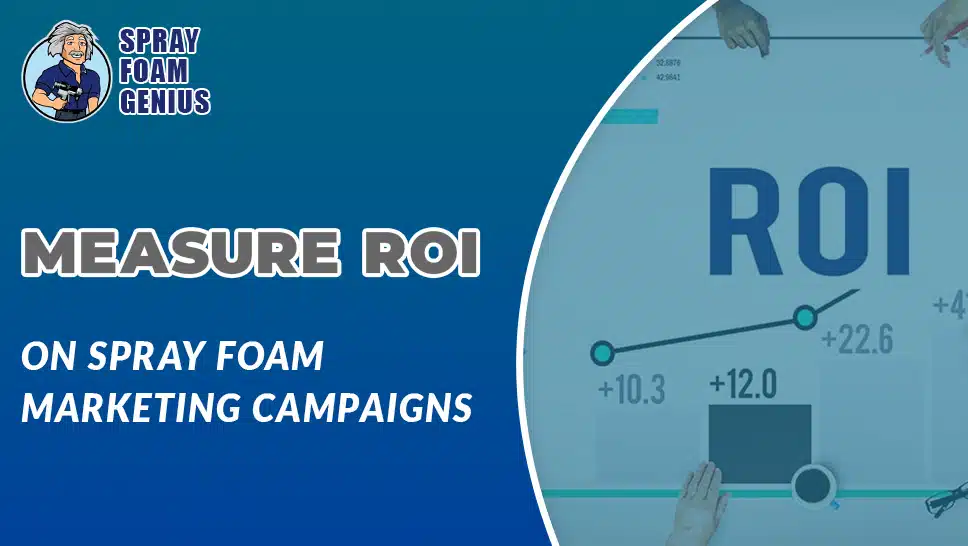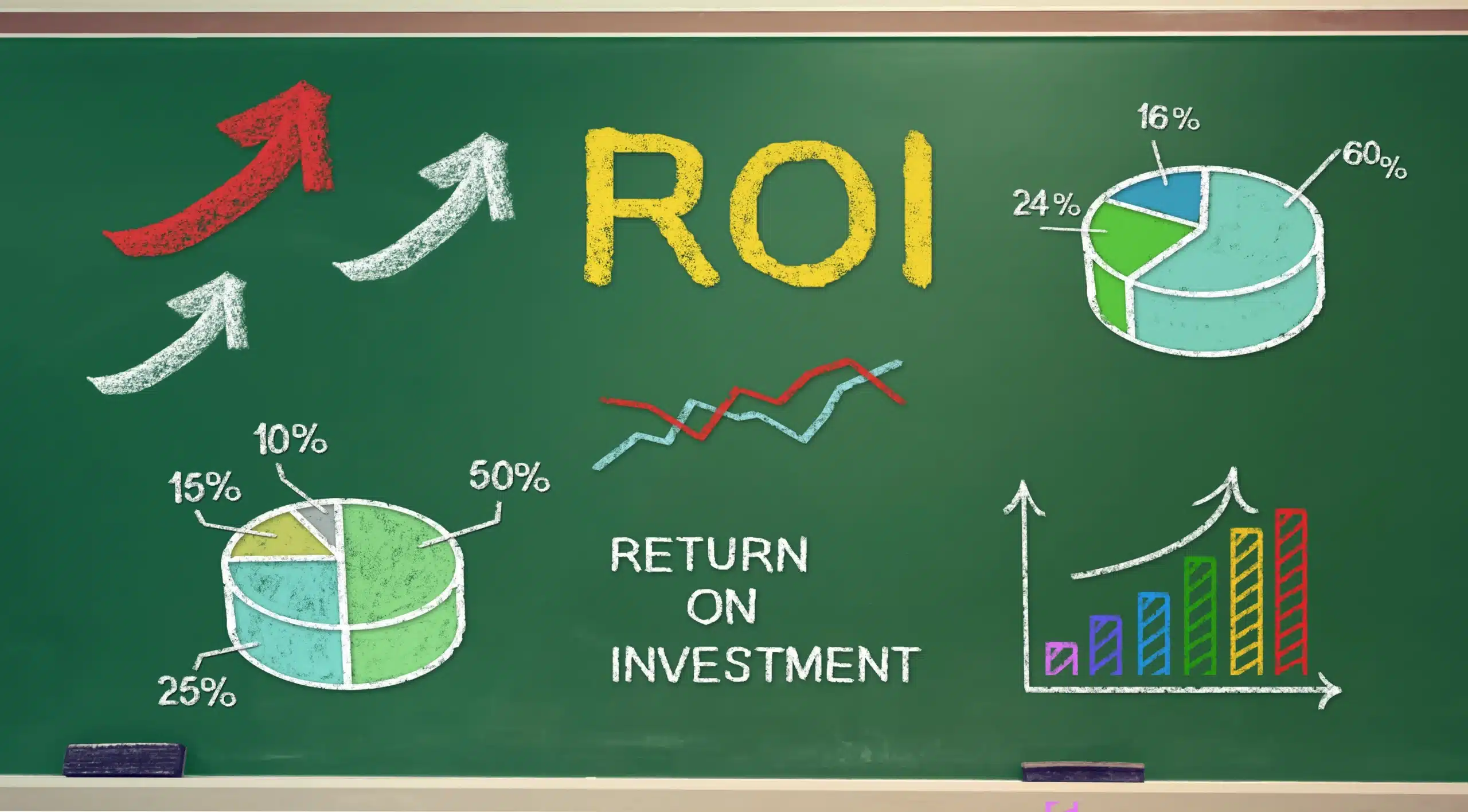
Tracking the return on investment (ROI) for your spray foam marketing campaigns is crucial to maximizing the effectiveness of your marketing efforts and ensuring that every dollar spent yields significant returns. At Spray Foam Genius Marketing, we specialize in delivering tailored marketing solutions for spray foam insulation contractors across the USA and Canada. This in-depth guide will provide you with comprehensive steps and strategies to track and optimize ROI, ensuring that your marketing campaigns are both efficient and profitable.
Understanding ROI and Its Importance
What is ROI?
Return on Investment (ROI) is a financial metric used to evaluate the profitability of an investment. In marketing, ROI measures how effectively your marketing efforts are converting investment into revenue. The basic formula for ROI is:
ROI=Net ProfitCost of Investment×100\text{ROI} = \frac{\text{Net Profit}}{\text{Cost of Investment}} \times 100 ROI=Cost of InvestmentNet Profit×100
For spray foam contractors, this involves calculating the revenue generated from marketing campaigns relative to the cost incurred in running those campaigns.
Why Tracking ROI Matters
Understanding and tracking ROI is essential for several reasons:
- Budget Optimization: By evaluating ROI, you can make informed decisions about where to allocate your marketing budget. This ensures that funds are spent on the most effective strategies and channels.
- Performance Measurement: ROI provides a clear picture of how well your marketing efforts are performing. It helps in identifying which campaigns are successful and which need improvement.
- Strategic Planning: Data-driven insights from ROI tracking enable you to refine your marketing strategies, plan future campaigns more effectively, and achieve better results.
- Resource Allocation: Efficiently managing marketing resources becomes easier when you know which campaigns deliver the highest returns.
Steps to Track ROI on Spray Foam Marketing Campaigns
1. Set Clear Marketing Goals
The first step in tracking ROI is to set clear and measurable marketing goals. These goals should align with your overall business objectives and be specific, measurable, achievable, relevant, and time-bound (SMART). Common goals for spray foam contractors might include:
- Increasing Website Traffic: Aiming to drive more visitors to your website through various marketing channels.
- Generating More Leads: Focusing on attracting potential customers who are interested in your spray foam insulation services.
- Improving Brand Awareness: Enhancing your brand’s visibility and recognition in the market.
- Boosting Conversion Rates: Increasing the percentage of leads that convert into paying customers.
2. Identify Key Performance Indicators (KPIs)
To measure ROI accurately, you need to identify the key performance indicators (KPIs) that align with your marketing goals. For spray foam insulation contractors, important KPIs might include:
- Cost Per Lead (CPL): The cost associated with acquiring a new lead. It helps you understand how much you are spending to generate potential customers.
- Conversion Rate: The percentage of leads that turn into paying customers. This KPI indicates the effectiveness of your marketing and sales efforts.
- Customer Acquisition Cost (CAC): The total cost of acquiring a new customer, including all marketing and sales expenses.
- Revenue Generated: The total revenue produced from your marketing campaigns. This metric shows the direct financial return from your efforts.
3. Track Marketing Expenses
Accurate tracking of marketing expenses is crucial for calculating ROI. Make sure to record all costs associated with your marketing campaigns, including:
- Ad Spend: Costs related to paid advertising on platforms such as Google Ads, Facebook Ads, or other digital channels.
- Content Creation: Expenses for producing marketing materials, including blog posts, videos, graphics, and other content.
- Software and Tools: Costs associated with marketing automation tools, CRM systems, and analytics software that help manage and track your campaigns.
- Agency Fees: Fees paid to marketing agencies or consultants for their services and expertise.
4. Measure Revenue and Conversions
To calculate ROI, you need to measure the revenue generated from your marketing campaigns. This involves tracking conversions and attributing revenue to specific marketing efforts. Utilize the following methods:
- Tracking Codes: Implement UTM parameters in your URLs to track the performance of different marketing channels. This helps you understand where your traffic and conversions are coming from.
- CRM Systems: Use Customer Relationship Management (CRM) systems to monitor leads, sales, and customer interactions. This allows you to link marketing efforts directly to revenue generation.
- Analytics Tools: Utilize tools like Google Analytics to track user behavior on your website. Set up goals and conversion tracking to measure how effectively your marketing campaigns drive desired actions.
5. Calculate ROI
Once you have collected the necessary data, calculate ROI using the formula:
ROI=Revenue Generated−Marketing CostsMarketing Costs×100\text{ROI} = \frac{\text{Revenue Generated} – \text{Marketing Costs}}{\text{Marketing Costs}} \times 100 ROI=Marketing CostsRevenue Generated−Marketing Costs×100
This formula provides you with a percentage that represents the return on your marketing investment. A positive ROI indicates that your campaigns are generating more revenue than they cost, while a negative ROI suggests that you need to re-evaluate your strategies.
6. Analyze and Interpret the Results
Interpreting ROI results involves comparing the ROI percentage with industry benchmarks and your marketing goals. Consider the following when analyzing your results:
- High ROI: A high ROI indicates that your marketing campaigns are effective and delivering substantial returns. This might suggest that your current strategies are working well and could be scaled or further optimized.
- Low ROI: A low ROI indicates that your campaigns may not be performing as expected. This might require a detailed analysis to identify underperforming areas and make necessary adjustments to improve results.
7. Adjust Marketing Strategies Based on ROI
Based on your ROI analysis, make data-driven adjustments to your marketing strategies. This may involve:
- Optimizing Ad Spend: Increase the budget for high-performing channels and reduce spending on those that are not delivering results.
- Improving Campaigns: Refine your marketing campaigns by enhancing content quality, targeting, or design to improve conversion rates and overall effectiveness.
- Testing and Iteration: Continuously test new marketing strategies, channels, and approaches. Use A/B testing and other methods to determine what works best and iterate based on performance data.
Tools and Resources for Tracking ROI

Google Analytics
Google Analytics is a powerful tool for tracking website traffic, user behavior, and conversions. By setting up goals and events, you can monitor the effectiveness of your marketing campaigns and gain valuable insights into user interactions on your site.
Google Ads and Facebook Ads
Both Google Ads and Facebook Ads provide detailed performance reports on your advertising campaigns. Metrics such as cost per click (CPC), click-through rate (CTR), and conversion rates are essential for evaluating the success of your paid advertising efforts.
CRM Systems
CRM systems, such as Salesforce or HubSpot, help track customer interactions, manage leads, and analyze sales performance. By integrating your marketing campaigns with a CRM, you can better understand how your marketing efforts impact customer acquisition and revenue.
Marketing Automation Tools
Marketing automation tools like HubSpot, Marketo, or Mailchimp offer advanced features for tracking and analyzing marketing performance. These tools can automate lead nurturing, provide detailed reports, and help you measure the effectiveness of various marketing channels.
Best Practices for Tracking ROI
Regularly Review and Update Metrics
Regularly reviewing and updating your metrics ensures that you capture relevant data and make informed decisions. As your marketing strategies evolve, adjust your KPIs and tracking methods to stay aligned with your business goals.
Focus on Customer Journey
Understanding the customer journey is crucial for accurate ROI measurement. Track how customers interact with your brand at different touchpoints and attribute revenue to specific marketing efforts. This holistic view helps you understand the impact of your campaigns on the entire customer experience.
Leverage Data Visualization
Data visualization tools, such as Google Data Studio or Tableau, can present ROI data in a clear and understandable format. Use charts, graphs, and dashboards to make it easier to interpret performance metrics and share insights with your team.
Ensure Proper Attribution
Proper attribution is essential for accurate ROI tracking. Use multi-touch attribution models to credit various touchpoints in the customer journey. This approach provides a more comprehensive view of how different marketing efforts contribute to conversions and revenue.
Elevate Your Business Today!
Tracking ROI on your spray foam marketing campaigns is essential for optimizing your marketing strategy and achieving the best possible results. By setting clear goals, identifying relevant KPIs, tracking expenses and revenue, and analyzing the results, you can make data-driven decisions that enhance your marketing efforts. At Spray Foam Genius Marketing, we are committed to helping spray foam insulation contractors succeed in their marketing endeavors.
For personalized assistance with tracking and optimizing your marketing ROI, don’t hesitate to Call us at 877-840-FOAM for USA and 844-741-FOAM for Canada visit our website at sprayfoamgeniusmarketing.com, or email us at [email protected] to get started.
Let us help you maximize the returns on your marketing investments and drive success for your spray foam insulation business.
- 5 Google My Business Hacks to Double Your Leads for Spray Foam Insulation Contractors - January 14, 2025
- Why Spray Foam Contractors Cannot Ignore Reputation Management in 2025 - January 13, 2025
- Local SEO Secrets Every Spray Foam Contractor Must Know to Win in 2025 - January 13, 2025

